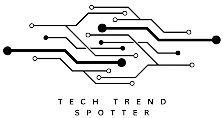In the bustling ecosystem of a theatre production, roles like the director, actor, and playwright are well-known. But what about the dramaturg? Often called the “play’s best audience,” the “in-house critic,” or the “architect of story,” the dramaturg is one of the most vital yet misunderstood roles in contemporary theatre.
This article serves as both a foundational guide for aspiring dramaturgs and a central hub for understanding the evolving, dynamic practice of modern dramaturgy.
What is a Dramaturg? Breaking Down the Essentials
At its core, dramaturgy is the art of dramatic composition and the theatrical representation of a story. A dramaturg is a dedicated expert who focuses on the context, structure, and detail of a production. They are the guardians of the play’s integrity and its bridge to the audience.
The role is fluid and adapts to the needs of the production, but it generally falls into three key areas:
1. Production Dramaturgy (The Most Common Role)
Working directly with the director, playwright, and cast, the production dramaturg is an embedded researcher and analyst. Their tasks include:
-
Contextual Research: Providing the creative team with detailed information on the play’s historical, social, political, and cultural setting.
-
Dramatic Analysis: Breaking down the script’s structure, themes, character motivations, and language.
-
New Play Development: Working with living playwrights to workshop new scripts, asking probing questions about plot, character consistency, and thematic clarity.
-
Rehearsal Room Resource: Being a “living encyclopedia” in the room, answering questions from actors and helping to ensure choices are consistent with the world of the play.
2. Literary Management
Often an institutional role, a literary manager focuses on the big picture. They:
-
Curate a theatre’s season of productions.
-
Read and evaluate new script submissions.
-
Develop relationships with playwrights.
-
Manage the theatre’s literary archive and commissioning programs.
3. Audience Engagement
The dramaturg ensures the audience can access and connect with the work. This involves:
-
Writing program notes, study guides, and lobby displays.
-
Leading post-show talkbacks and pre-show lectures.
-
Creating digital content that deepens the audience’s understanding before and after the show.
The Dramaturg’s Toolkit: Skills for the Modern Practitioner
The perfect dramaturg is a unique blend of scholar and artist. Key skills include:
-
Rigorous Research Abilities: Knowing how to find accurate, compelling information from credible sources.
-
Exceptional Communication: Translating complex ideas clearly and concisely, both in writing and in conversation.
-
Critical Thinking & Analysis: Moving beyond summary to interpret how a play’s parts create a cohesive whole.
-
Collaborative Spirit: Offering insights without being prescriptive; your job is to empower, not to dictate.
-
Cultural Fluency: Understanding the contemporary context in which a play is being produced and how it will resonate with a modern audience.
The Hub: Exploring Modern Dramaturgy
Modern dramaturgy has exploded beyond the classic text-based play. Today’s dramaturgs are essential in shaping a vast array of theatrical experiences.
1. Devised and Experimental Theatre
In devised work, where a piece is created collaboratively from scratch rather than from a pre-written script, the dramaturg is often a dramaturgical provocateur. They help shape the emerging material, ask essential questions about narrative and form, and ensure the piece has a coherent internal logic. They are architects of structure in a process that often lacks a blueprint.
2. Digital & Immersive Performance
How do you dramaturg an immersive show where the audience moves through the space? Or a digital performance experienced online? The dramaturg helps map the audience’s journey, ensuring the story is clear and impactful regardless of the medium. They consider user experience (UX) as a key component of the narrative.
3. Advocacy and Curatorial Dramaturgy
Modern dramaturgs are often advocates for underrepresented voices. They curate seasons and develop plays that diversify the stories on stage, challenging the canon and pushing the art form forward. This is dramaturgy as a practice of ethical and inclusive storytelling.
4. Production Dramaturgy for the Classics
Even with a classic play, the modern dramaturg’s job isn’t to enforce a “correct” interpretation. It’s to provide the context and then help the director and cast find a relevant interpretation. They ask: “Why this play, for this audience, now?” This might involve exploring modern parallels or deconstructing the text to reveal new meanings.
Resources for the Aspiring Dramaturg
Your journey is just beginning. Dive deeper into the world of dramaturgy with these resources:
-
Professional Organizations:
-
LMDA (Literary Managers and Dramaturgs of the Americas): The premier organization in North America. They offer networking, job boards, conferences, and mentorship programs.
-
Dramaturgs’ Network (UK): A great resource for those based in or interested in the European theatre scene.
-
-
Must-Read Books:
-
The Dramaturgy of the Real on the World Stage edited by Carol Martin
-
Dramaturgy in the American Theatre: A Source Book by Jonas Barish
-
What is Dramaturgy? by Bert Cardullo
-
-
Practice & Connect:
-
Read everything: Plays, history, philosophy, science, current events. Your knowledge is your toolbox.
-
See everything: Theatre, dance, opera, art exhibits. Understand how stories are told across mediums.
-
Start a conversation: Reach out to local theatres and offer to write program notes or lead a talkback for free. Build your experience and your network.
-
The life of a dramaturgy is one of curiosity, service, and profound creativity. You are the question-asker, the context-provider, and the connective tissue that binds the play, the production, and the audience into a single, powerful experience. Welcome to the engine room of storytelling.
